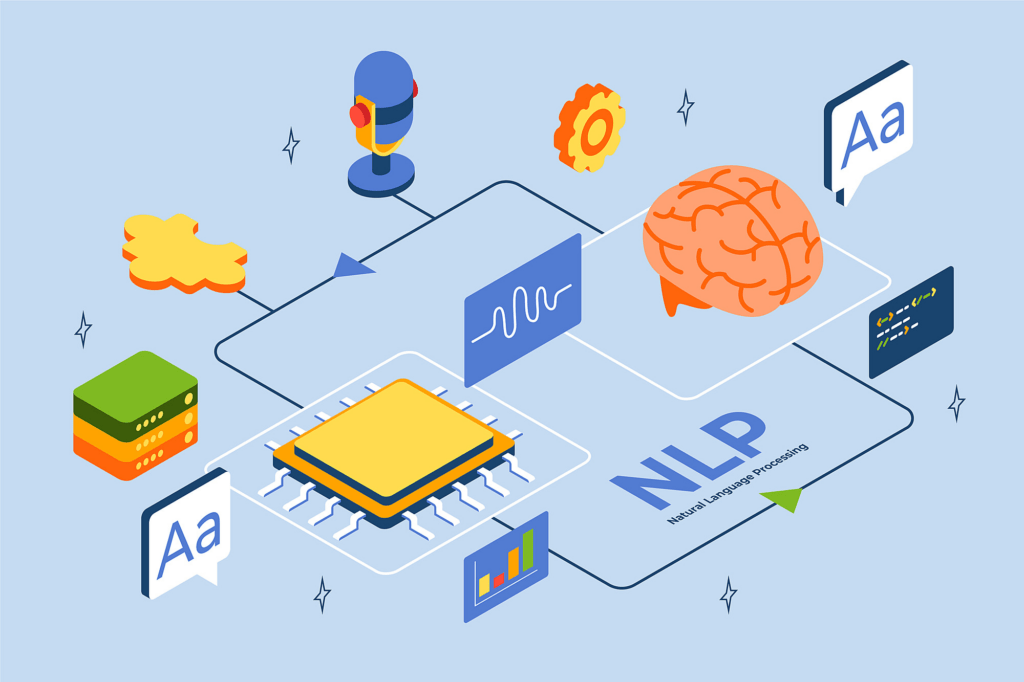Project Management
A Guide To Large Language Models(LLMs) For Enterprises
- Jui Bagul
- August 17, 2023

Generative AI and Large Language Models(LLMs) share a symbiotic relationship in the realm of AI. Generative AI encompasses a range of techniques designed to create data, often mimicking human-like outputs. LLMs, on the other hand, represent a powerful subset of Generative AI that specializes in understanding and producing human language.
When integrated, Generative AI and LLMs empower bots to engage in more dynamic, coherent, and personalized conversations, revolutionizing the way humans interact with technology. According to our survey, around 78% of businesses are very likely to implement Generative AI solutions in their company within the next 12 months. Out of these 57% are planning to utilize this technology for enhancing the CX which is mainly in the form of digital assistance or bot interactions.
Introduction
Definition Of Large Language Models(LLMs)
Large Language Models(LLMs) are advanced AI models that use large amounts of data for training and to understand and create human-like language. They use complex algorithms and deep learning techniques to process and comprehend the intricacies of natural language to perform tasks such as text generation, language translation, and more.
Importance Of Large Language Models(LLMs) For Enterprises
Large Language Models(LLMs) hold significant importance for enterprises due to their wide range of applications and capabilities. Some key reasons why LLMs are valuable for businesses include:
Automated Customer Support: LLMs can power chatbots and virtual assistants that provide 24/7 customer support, answering queries, resolving issues, and guiding customers through various processes.
Content Generation: LLMs can create high-quality content for marketing, advertising, social media, and other platforms, saving time and resources for enterprises.
Data Analysis: LLMs can process and analyze large volumes of text data, extracting insights and trends that can help in decision-making.
Language Translation: LLMs can translate text with high accuracy, enabling global enterprises to communicate effectively with their customers and partners.
Personalization: LLMs can analyze user preferences to offer personalized recommendations, enhancing the customer experience and driving sales.
Coding Tasks: LLMs can help developers generate code snippets and documentation, find bugs in code, structure code efficiently, and produce test cases to improve test coverage.
Training and Education: LLMs can develop interactive and engaging training materials, e-learning modules, and tutorials for employees and clients.
IBIS Education’s integration of DaveAI’s GenAI pipeline, in conjunction with an aligned Large Language Model for the virtual avatar, allows for the creation of real-time learning content that is accessible both on the web and in virtual reality environments. The virtual avatar replicates a virtual tutor to enhance the learning experience. This avatar serves as an interface for an immersive delivery of the content. It utilizes the LLM to convert the textual input into natural and engaging interactions. These avatars can simulate real-time conversations, answer questions, and provide guidance to learners in a dynamic manner. This approach enhances comprehension and retention of the concepts, catering to the different learning preferences and styles of the students.
Benefits Of Large Language Models(LLMs) For Enterprises
Improved Customer Service And Support

24/7 Availability: LLM-powered chatbots and virtual avatars can offer round-the-clock customer support, addressing queries and concerns even outside of business hours.
Quick Response Times: LLMs can instantly analyze and respond to customer inquiries, reducing wait times and enhancing user satisfaction.
Accurate Responses: LLMs ensure consistent and accurate information is provided to customers, reducing the risk of misinformation.
Scalability: LLMs can handle a large volume of customer interactions simultaneously.
Multi-Language Support: LLMs can communicate with customers in multiple languages, enabling enterprises to cater to a diverse customer base.
Data-driven Insights: LLMs can analyze customer interactions to extract valuable insights into common issues and pain points, enabling businesses to proactively address customer needs.
Personalization: LLMs can analyze customer behaviour and past interactions to offer personalized recommendations, enhancing the customer experience.
Enhanced Natural Language Processing (NLP) Capabilities

Contextual Communication: LLMs can comprehend human language in a better way that allows context-aware interactions in chatbots and virtual avatars.
Enhanced Language Translation: LLMs can produce fluent translations between languages, facilitating global communication and expanding market reach.
Semantic Analysis: LLMs can perform advanced semantic analysis to extract deeper meanings from data, helping businesses gain deeper insights from customer feedback, reviews, and social media interactions.
Sentiment Analysis: LLMs enable accurate sentiment analysis, helping enterprises gauge customer opinions and emotions to make informed decisions.
Streamlined Data Analysis And Decision-Making

Efficient Data Processing: LLMs can quickly analyze and interpret vast amounts of data.
Real-time Monitoring: LLMs can monitor and analyze online conversations, social media, and customer feedback in real-time, allowing businesses to respond promptly.
Competitor Analysis: LLMs can analyze competitor content providing valuable input for strategic decision-making.
Predictive Analytics: By analyzing historical data, LLMs can assist in predicting future trends, customer behaviour, and market shifts, aiding in proactive decision-making.
Faster Decision Making: LLMs provide quick access to relevant information, enabling faster and well-informed decision-making.
Best Practices For Adopting Large Language Models(LLMs) In Enterprises
Adopting Large Language Models(LLMs) holds immense potential for transforming how enterprises interact with customers, analyze data, and streamline operations. However, integrating these powerful AI systems requires careful planning and execution to ensure optimal results. By following best practices in the adoption of LLMs, businesses can harness their capabilities effectively.
Define Clear Objectives And Use Cases
1. Clearly defining objectives allows businesses to design LLM solutions that precisely address business needs.
2. Clear objectives make it easier to measure the success and impact of the LLM implementation. Businesses can establish relevant KPIs to track progress and demonstrate ROI.
3. Well-defined use cases help in communicating the benefits of LLM adoption to stakeholders, garnering their support and involvement in the process.
Curate High-Quality Training Data
1. Businesses should ensure training data covers a wide range of topics to create a model that is capable of handling various intents.
2. Businesses should pre-process the data to remove errors, and inconsistencies, and then structure it.
3. Adding labels for specific tasks such as sentiment analysis or named entity recognition is essential.
4. Businesses should be vigilant about potential biases in the training data.
5. Incorporating domain-specific data that is relevant to the enterprise and industry is important.
6. Businesses should ensure that any sensitive or private information in the training data is protected to comply with privacy regulations.
DaveAI’s Middleware manages interactions in line with the enterprise’s data security policy using an inbuilt database, NLP, and named entity recognition engine.
7. Businesses should set aside a portion of data for validation and testing purposes.
9. Then later, the training data can be expanded by using techniques like data augmentation.
10. At last, businesses should continuously gather feedback from users interacting with the LLM.
Conclusion
Advancements In LLM Technology
Large Language Models(LLMs) will be fine-tuned to excel in specific industries or domains, providing tailored solutions and insights.
Industry Applications
Octopus Energy, a UK-centered energy provider, has seamlessly integrated ChatGPT into its customer service channels, effectively managing a significant 44% of customer inquiries.
Coca-Cola has collaborated with Bain & Company, to leverage ChatGPT for enhancing marketing strategies and crafting unique customer experiences.
Duolingo has introduced two fresh functionalities by investing in GPT-4, to utilize the LLM to enhance the learning experience. With Duolingo Max, language learners can receive comprehensive explanations on subjects similar to the insights from a human teacher.
DaveAI allows enterprises to leverage power tools like GPT, Bard, and Midjourney without having to commit to a single technology at an early stage.
By providing the opportunity for enterprises to access and integrate various tools without a rigid commitment to a specific technology stack from the outset, several benefits emerge:
1. Enterprises can experiment with and explore different tools to understand their strengths, weaknesses, and compatibility with their specific needs. This approach encourages a more informed decision-making process.
2. The technology landscape is dynamic and can change rapidly. Allowing enterprises to avoid early commitments helps mitigate the risk of investing heavily in a technology that might become obsolete or less effective over time.
3. The ability to explore and adopt multiple technologies encourages innovation. Enterprises can combine the strengths of different tools to create novel solutions that address complex challenges.
4. By leveraging new tools without early commitments to a single technology, companies can position themselves for long-term success and stay ahead of the competition.
